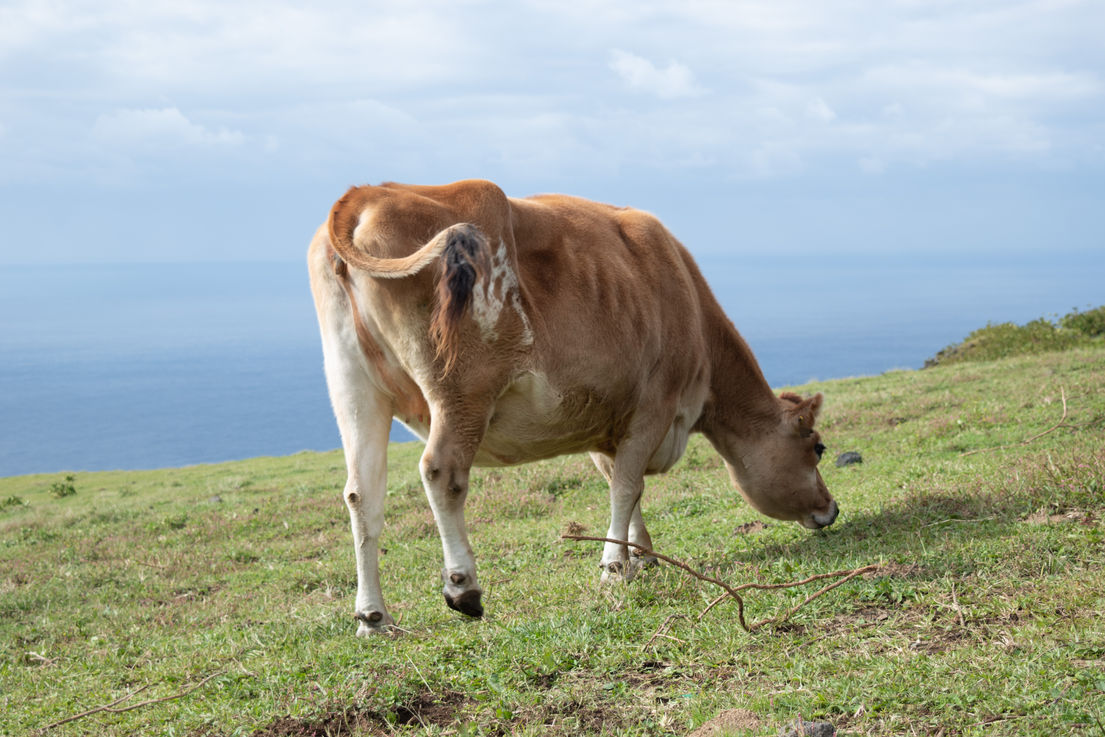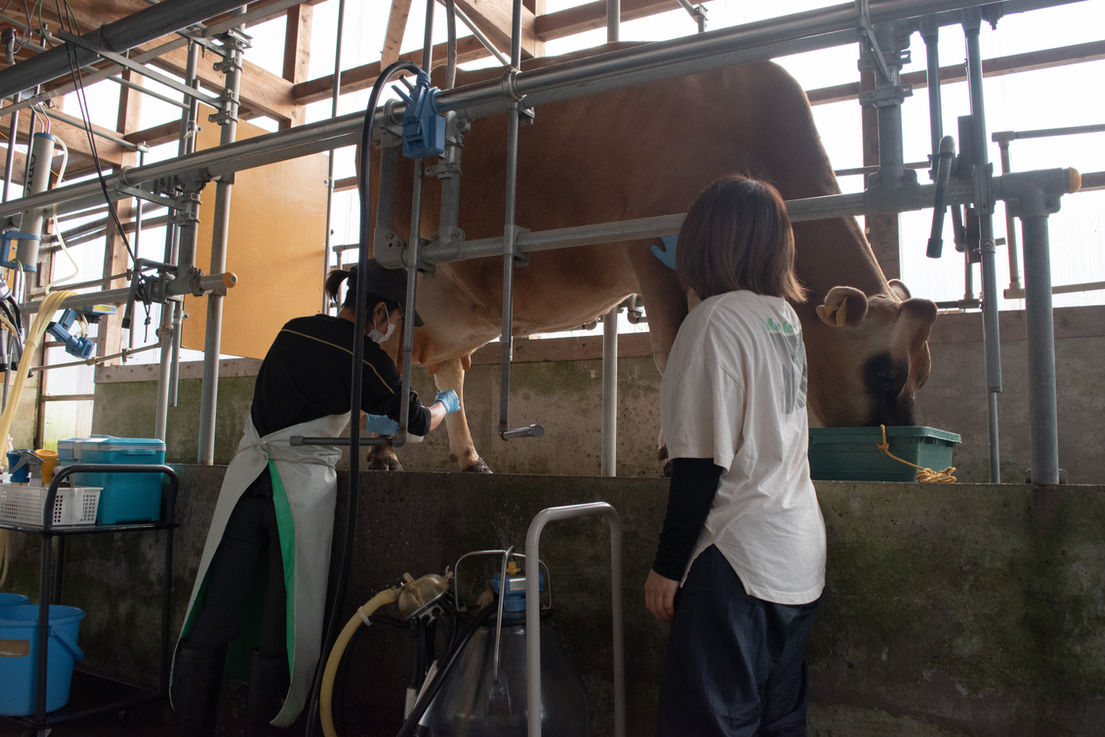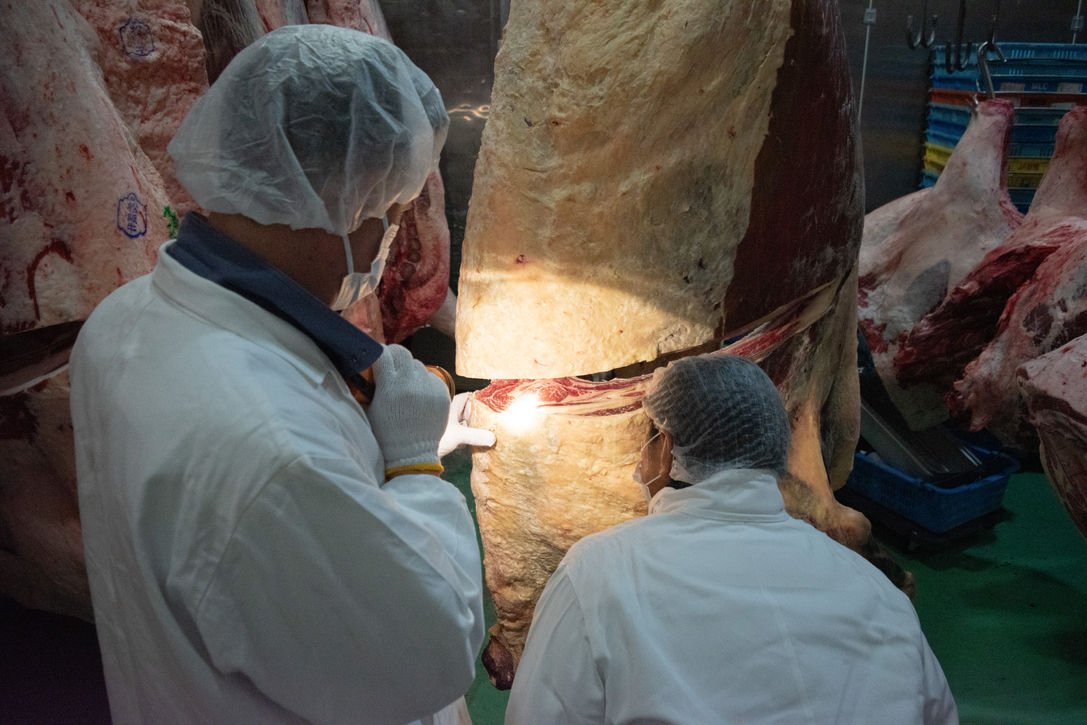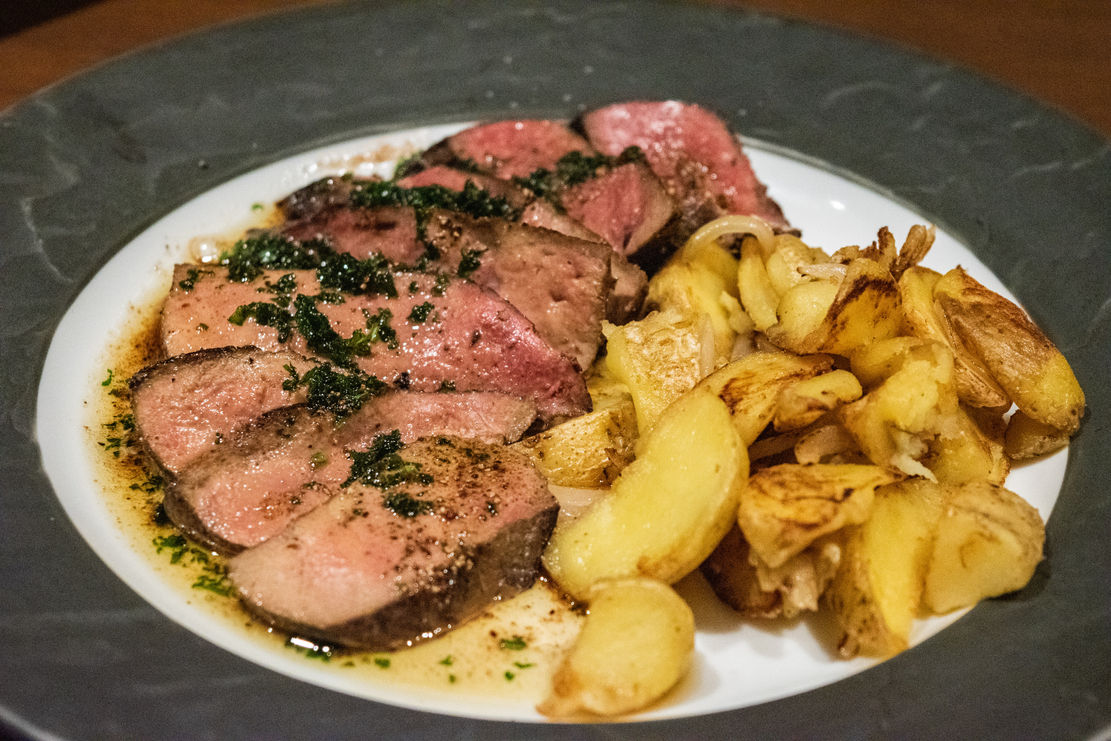Photographer, Filmmaker
Rethinking the Status Cow
September-November, 2021
This four-part photo essay documents an experiment by the All-Japan Food Association (AJFA) on an alternative method of breeding, raising, fattening, and slaughtering beef cattle. The current Wagyu system in Japan is rife with inefficiencies, absurd food mileage, and an enormous environmental footprint. Their experiment featured Kanta, a jersey bull raised on Hachijo-jima. Bulls born on dairy farms are usually killed at birth but the AJFA instead chose to raise him, fatten him up, in an effort to combine the dairy and the beef industry, thereby creating a more holistic and sustainable process. To do this they shortened the supply chain by limiting the need for middlemen and was sold directly to chefs and restaurants.
Part 1: From Dairy Cattle
On the island of Hachijou, an island south of Tokyo, Jersey cattle and F-1 (Holstein and Wagyu Hybrid) roam on vast pastures. Due to this it is possible to have their diet consist of local grass supplemented with imported hay. The All-Japan Food Association has raised three cows here over the past two years, all of them Jersey cattle, two female cows that had given birth multiple times and one jersey bull (Kanta) who I followed on the mainland.
Part 2: From Dairy Cattle to Beef Cattle
In late 2020, Kanta was moved to Isonuma Dairy Farm, located in the outskirts of Tokyo (Hachioji). Isonuma Dairy Farms is also an outlier among dairy farms since cows here are able to roam somewhat more freely, with slopes and inclines to get the cattle to exercise. Here Kanta's diet consisted of hay and eco-feed, repurposed food scraps from factories and sometimes even breweries. He spent close to a year, eating and being fattened up until he was sent to the slaughterhouse. In some cases Wagyu cattle could be shipped nationwide from Okinawa to Hokkaido in some extreme cases, to be fattened up. Kanta's journey from Hachijo-jima to Hachioji reduces the emissions and the food mileage that may occur during the normal process.
Part 3: From Beef Cattle to Beef
Photography was not allowed in the slaughterhouse but I was able to take a few pictures of the carcass afterwards. It was kept there for a day and then shipped to Maruyoshi Shouji, a meat packaging factory right outside of Tokyo where it underwent a process similar to dry-again known as karashi. This was unusual as it skipped the market place and went directly to the meat distributor, eliminating the need for extra transportation and additional food mileage.
Part 4: Beef to Cuisine
Jersey beef hardly found its way to a restaurant table unless minced and put into a sausage. In other words it was considered a low-quality beef. But this time, after the beef was processed, it was shipped to several restaurants which were part of the All-Japan Food Association's network. Kakunoshin-F (a restaurant that specializes in dry-aged beef) got some of the intestines, Ningyocho Imahan Banyo (a Japanese restaurant that specializes in sumibi-yaki Wagyu steak, and Wakiya Turandot (a Chinese restaurant). Each restaurant and chef approached the Jersey beef differently and in their own way attempted use all of the beef's potential.
The All-Japan Food Association is still not done with this project. While I was visiting Hachiojima another cow was prepared to arrive at the Isonuma Farms to undergo the same procedure as Kanta but was delayed due to logistical issues. They plan to continue moving forward with their research and find a more holistic and sustainable method of raising beef. Eventually, they hope to expand and popularize the process in small scales all over the country.




















































